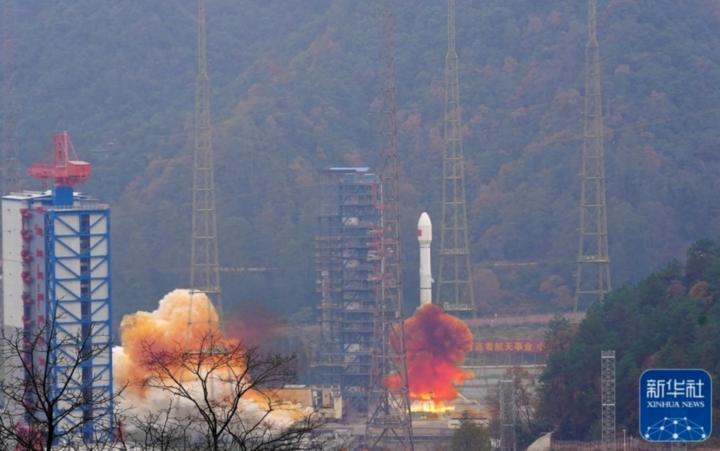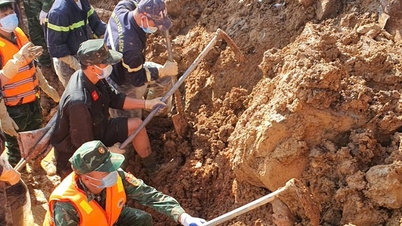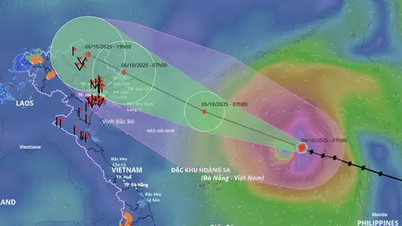At 11:26 a.m. on December 26, China's Long March 3B and Far March 1 rockets were launched from the Xichang Satellite Launch Center in southwestern Sichuan Province, delivering the 57th and 58th Beidou navigation satellites into predetermined orbits.
This is the first group of medium-Earth orbit navigation satellites launched since the Beidou-3 global navigation system (BDS-3) officially went into operation on July 31, 2020. To date, the number of China's Beidou navigation satellites in orbit is 48, including 15 Beidou-2 satellites and 33 Beidou-3 satellites.

China launched the Long March-3B and Far March-1 rockets from the Xichang Satellite Launch Center, sending the 57th and 58th Beidou navigation satellites into designated orbits. (Photo: Xinhua)
The launch of these two satellites is aimed at ensuring that the Beidou system can provide safe, continuous and reliable services, said Xie Jun, deputy chief engineer of the Beidou-3 project at the China Aerospace Science and Technology Corporation. In addition, it can also conduct technology tests for the next generation of navigation satellites.
After being put into orbit and completing the tests, these two satellites will be connected to the Beidou navigation system, to further improve the stability and reliability of the constellation as well as reduce the system's operational risks. Increasing the number of navigation satellites will also help further improve the BDS's positioning accuracy and quality.
Currently, each region in the world can observe at least 6-8 BDS satellites. Official data shows that the space signal availability of BDS has reached 100%, the space signal continuity is 99.996% in 2023. According to Mr. Ta Quan, the global positioning accuracy of BDS is 5m, in which the Asia- Pacific region is even better, far exceeding the design specifications.
It is known that the Beidou-3 global positioning system is the largest and most complex space system, with the widest coverage, highest service efficiency and most closely related to the lives of Chinese people today.
2024 marks the 30th anniversary of China's construction and development of the Beidou system. Of which, the Beidou-1 system was completed in 2000, serving China; the Beidou-2 system was completed in 2012, covering the Asia- Pacific region; the Beidou-3 system was completed and put into use in 2020, aiming at the global level.
By 2022, the core industrial scale of BDS has reached 140 billion yuan (19.62 billion US dollars). The total output value of China's satellite navigation service industry has also exceeded 500 billion yuan in 2022.
Bich Thuan (VOV-Beijing)
Source


![[Infographic] Notable numbers after 3 months of "reorganizing the country"](https://vphoto.vietnam.vn/thumb/1200x675/vietnam/resource/IMAGE/2025/10/4/ce8bb72c722348e09e942d04f0dd9729)
![[Photo] General Secretary To Lam attends the 8th Congress of the Central Public Security Party Committee](https://vphoto.vietnam.vn/thumb/1200x675/vietnam/resource/IMAGE/2025/10/4/79fadf490f674dc483794f2d955f6045)

































![[Photo] Prime Minister Pham Minh Chinh chairs meeting to deploy overcoming consequences of storm No. 10](https://vphoto.vietnam.vn/thumb/1200x675/vietnam/resource/IMAGE/2025/10/3/544f420dcc844463898fcbef46247d16)
![[Photo] Students of Binh Minh Primary School enjoy the full moon festival, receiving the joys of childhood](https://vphoto.vietnam.vn/thumb/1200x675/vietnam/resource/IMAGE/2025/10/3/8cf8abef22fe4471be400a818912cb85)




































































Comment (0)